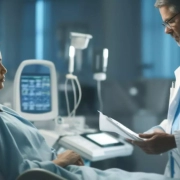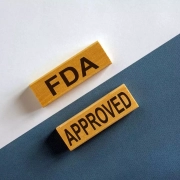
Madurai: Holding a Tirunelveli-based hospital and its attending doctor guilty of unfair trade practices and services deficiencies, the Circuit Bench of the Tamil Nadu State Consumer Disputes Redressal Commission in Madurai directed them to pay Rs 1 lakh compensation to the Tamil Nadu State Consumer Welfare Fund.
The consumer court gave such an order after noting that the hospital and its doctor forced patients to exclusively buy costly medicines from the pharmacy of the hospital. Further, the complainant was forced to purchase blood even though her sister had the same blood group and they were also charged more than the MRP of the medicines.
“…this Commission deeply saddened by the facts that once the hospitals are felt Equivalent to Temples . But now-a-days it has become a commercial business market. Absolutely, there is no necessity for the hospital and the doctor to direct the patient to purchase the medicines only from them. They may even directly use medicines and charged for the same. But, forcing the patient to buy medicines than required and charging more amount than MRP certainly amounted to unfair trade practice,” noted the Consumer Court.
Apart from paying the compensation to the Consumer Court fund, they have also been directed to pay the complainant Rs 1 lakh towards the extra amount charged from the complainant and compensation for mental agony suffered by the complainant.
Also Read: Consumer Court relief to Max hospital, cardiologist accused of recommending unnecessary tests including angiography, coercion into cardiac procedures
The matter goes back to 2012 when the complainant approached the hospital and got admitted for undergoing hysterectomy procedures. The operation went on uneventful and she was treated at the hospital as an inpatient for the next couple of days.
As per the complainant, the complainant’s sister had also the same blood group. However, even tough this was informed to the hospital and the doctor, they allegedly forced the attender to purchase blood bottle for Rs 1100 from the blood bank.
Allegedly, during the transmission of blood and after it was over, the complainant developed some complications and she was immediately brought to the Intensive Care Unit and treated with medicines, CTC scan was also done. The complainant and her attender were allegedly forced to purchase medicines only from the hospital’s pharmacy. In fact, the attender of the complainant was allegedly ill-treated when she purchased and brought some medicines from outside.
Apart from this, the attender and the complainant were asked to purchase the medicines in large quantity than necessary. They also alleged that they were charged for the medicines more than the Maximum Retail Price (MRP). Alleging it to be unfair trade practice on the part of the hospital, the complainant approached the consumer court asking direction upon the hospital and the doctor to refund the value of the medicines and also to furnish medical records such as history of treatment, discharge summary etc.
They also demanded Rs 3 lakh as compensation of Rs 3 lakhs for mental agony and pain suffered by the Complainant and another sum of Rs 18 lakh as compensation payable to the Tamil Nadu State Consumer Welfare Fund for financial loss or injury suffered by the large number of patients.
On the other hand, the hospital and the doctor denied the allegations labeled against them. They submitted that the medicines were purchased and kept by the hospital only for the welfare of the patient and for keeping those medicines it costs more. They denied committing any deficiency in service or getting indulged in any unfair trade practice.
After considering the entire version of the hospital and the doctor, the Commission noted that the denial on their part is not specific with regard to each allegations rather it is very general in nature.
“For example, the complainant alleged that her sister is having same blood group of the complainant but they were forced to buy blood from other blood bank for that only an evasive reply was given as if the complainant failed to disclose what her blood group was. The point for consideration is whether any representation was made to the hospital with regard to the attender is also having same blood group of the patient. If it is so, then why they were forced to buy blood from other blood bank. The opposite parties did not reply to the above allegation in the written version. Even, the opposite parties did not mention the necessity for purchasing such blood from outside, in particular, no medical history and treatment particulars were not produced by the opposite parties. Operation theatre notes were also not produced by them. When the complainant alleged that she was forced to buy a large quantity of medicines than required, is it not the duty of the opposite parties to produce the treatment particulars to prove the fact that the medicines are very much necessary for treatment and all the purchased medicines were administered only to the patients?” questioned the consumer court.
The State Commission further observed how medicines and equipment were purchased in bulk and noted, “Though the complainant has given elaborate tabular column with regard to the quantity of medicines purchased by her, there is no whisper about those particulars. For example, Venflon injection has been purchased for each day. Similarly, disposable syringes were purchased more than 50 in numbers. The purpose of Venflon is to fix for administering liquid medicines. When a Venflon once fixed and utilized, it can be used for days together. There is no necessity to fix Venflon for every day. As rightly argued if Venflon is fixed for every day, the very purpose of using the same became ridiculous. By marking the purchase receipt, the complainant is able to prove that she was forced to purchase more quantity of medicines than required and as there is contra proof in not producing the medical records, the above allegation is accepted by this Commission as proved.”
In respect of the complainant’s allegation that they were charged more than Maximum Retail Price, the Commission noted that the hospital and the doctor did not deny the same. It also noted that the complainant gave very elaborate particulars what was the price bought by her and what was the MRP for the above medicines and they were not at all disputed by the other side.
“But, in the written version they impleadly admitted the sale of medicines for higher rate than MRP by stating that the medicines were kept for the use of inpatients and hence it costs more. Therefore, all these complaint’s allegations are proved,” the Commission observed.
Apart from this, the Commission further observed that on the basis of a complaint sent to the Drug Inspector and Revenue Inspector, the hospital was inspected and they found irregularities in keeping and selling the medicines which is against the provisions of Drugs and Cosmetics Act, 1940.
“So, the complainant has proved his case and this Commission found that the Doctors and the hospital have committed deficiency in service as well as indulged in unfair trade practice,” opined the Commission.
While fixing the amount of compensation, the Commission noted that there was no proof of ill-treatment and the patient was cured by the hospital and its doctor. The only offense was that they were charged an extra amount than the actual expenses.
Therefore, to disallow such practices, the Commission directed the hospital and the doctor to pay Rs 1 lakh to the complainant and another Rs 1 lakh to the Tamil Nadu State Consumer Welfare Fund.
“So, to disallow the above such practice, this Commission directed the opposite parties jointly and severally to pay Rs.1,00,000/- to the Tamil Nadu State Consumer Welfare Fund and also to pay another sum of Rs.1,00,000/- to the complainant as compensation for extra amount charged and for mental agony suffered by her within one month from the date of receipt of copy of this order failing which the above amounts shall carry interest at the rate of 9% per annum from the date filing the complaint till its realization. The opposite parties 1 & 2 are also directed jointly and severally to pay the complainant a sum of Rs.10,000/- as costs,” ordered the consumer court.
To view the order, click on the link below:
https://medicaldialogues.in/pdf_upload/unfair-trade-practice-227621.pdf
Also Read: 18 ICU Patient deaths Due to Lack of Oxygen: Hospital held guilty of administrative negligence, slapped Rs 20 lakh compensation




















